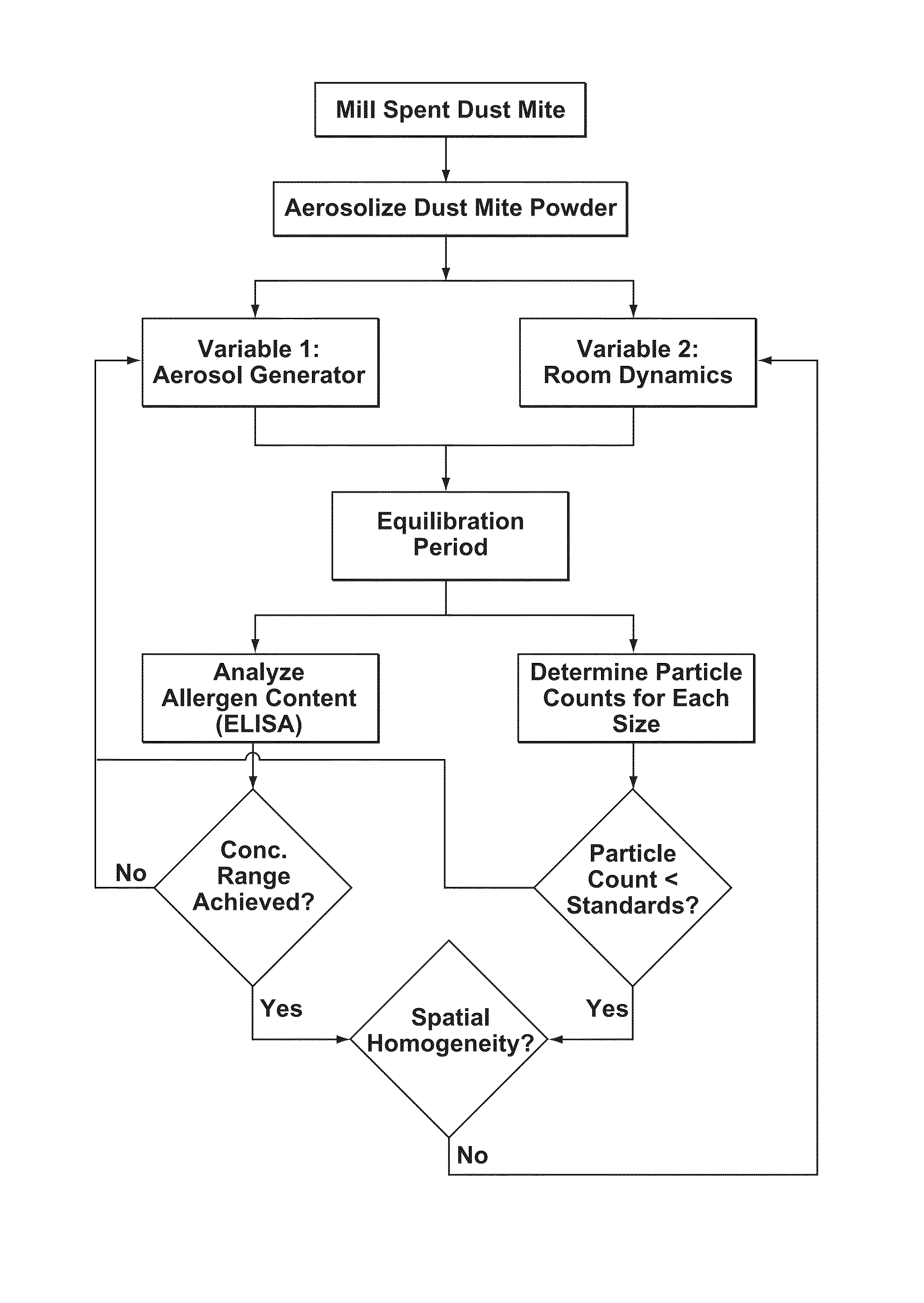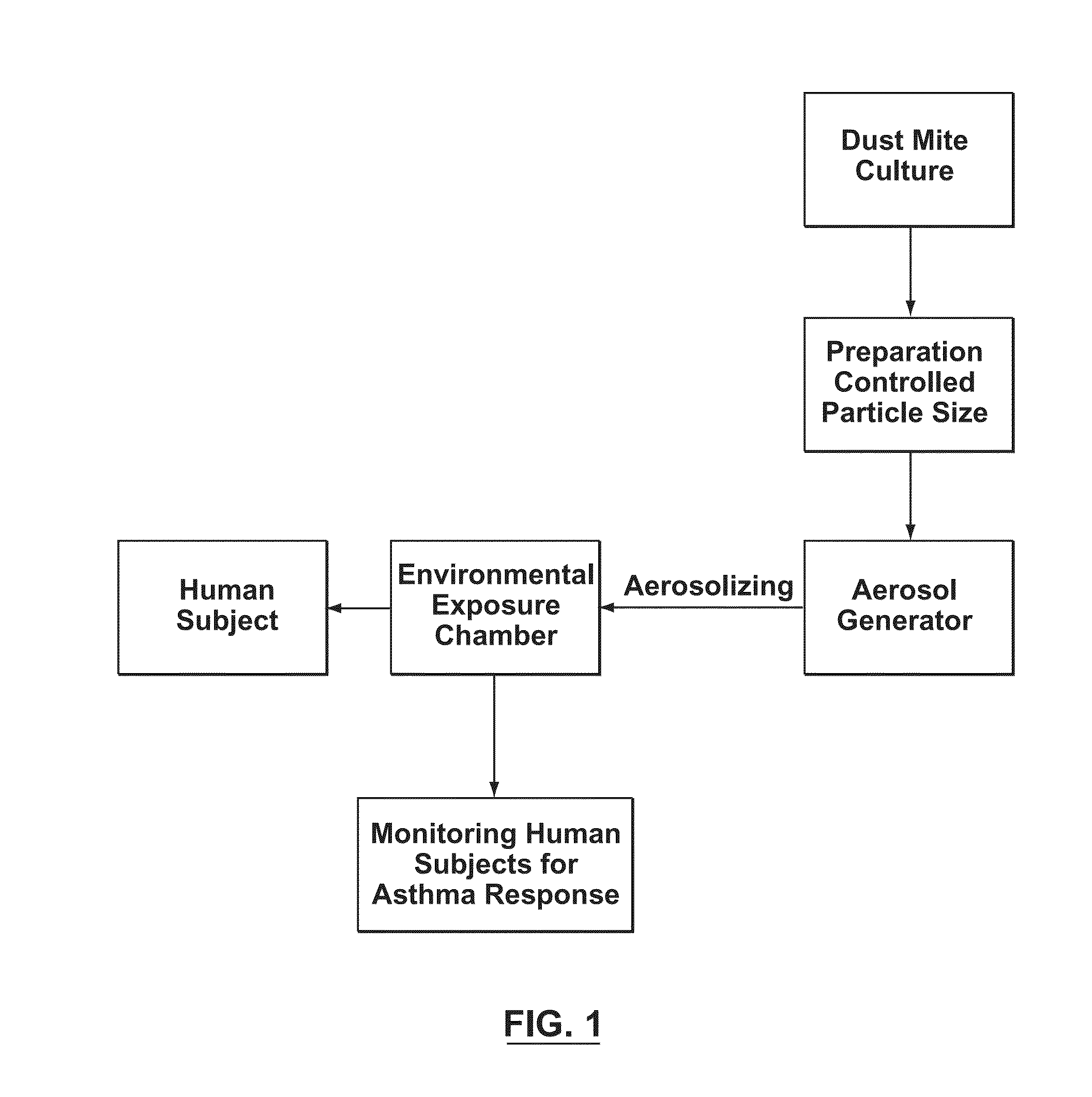Method, materials and apparatus for investigating asthma using dust mite allergen
a technology of dust mite allergen and human body, applied in the field of new methods, materials and apparatus for investigating asthma in humans, can solve the problems of difficult to effectively aerosolize larger particles, small particles that are too small, less than 2.5 microns in diameter, etc., and achieve strong correlation
- Summary
- Abstract
- Description
- Claims
- Application Information
AI Technical Summary
Benefits of technology
Problems solved by technology
Method used
Image
Examples
example
[0094]Cultured spent dust mite cultures were acquired from a supplier (in this case INDOOR Biotechnologies Inc. of Charlottesville, Va., U.S.A.). These cultures were conditioned such that dust mite culture particles are size reduced with the majority of the particles to be less than 25 μm, and generally in the range of 5-15 μm. Particle size reduction was achieved with ballmilling under low humidity conditions (or other inert gas conditions) suitable for hygroscopic powders. Milled dust mite cultures were stored at room temperature and desiccated to prevent clumping.
[0095]Milled dust mite cultures were aerosolized with an aerosol generator within an EEC, as described above, with the dust mite particle aerosolization maintained with generation of turbulent flow within the chamber by at least one fan placed strategically in the chamber.
[0096]The number of fans and their position within the chamber which are required for maintenance and spatial distribution of dust mite allergen is det...
PUM
| Property | Measurement | Unit |
|---|---|---|
| diameter | aaaaa | aaaaa |
| concentration | aaaaa | aaaaa |
| concentration | aaaaa | aaaaa |
Abstract
Description
Claims
Application Information
 Login to View More
Login to View More - R&D
- Intellectual Property
- Life Sciences
- Materials
- Tech Scout
- Unparalleled Data Quality
- Higher Quality Content
- 60% Fewer Hallucinations
Browse by: Latest US Patents, China's latest patents, Technical Efficacy Thesaurus, Application Domain, Technology Topic, Popular Technical Reports.
© 2025 PatSnap. All rights reserved.Legal|Privacy policy|Modern Slavery Act Transparency Statement|Sitemap|About US| Contact US: help@patsnap.com



